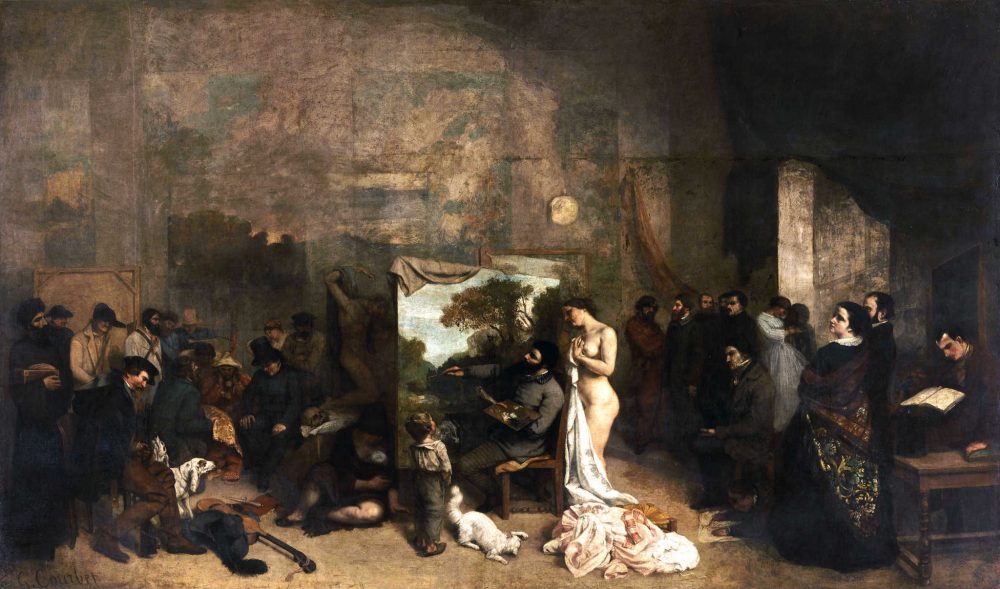Courbet
Fundamental Paintings to Understand the History of Painting
We could make this publication thanks to small donations. How is 3 minutos de arte supported?
L’Atelier du Peintre (The Artist’s Studio) (1854/55). Courbet
Oil on canvas. 359 cm x 598 cm
Musée d’Orsay. Paris, France
Courbet is the founder of Realism, the movement of the second half of the 19th century that opposed the idealization with which Romanticism showed the world and social facts. And we can say that the movement “started with” or “was triggered by” this work.
In 1855, the jury of the Universal Exposition accepted paintings by Courbet, but rejected this one because of its size. This decision prompted Courbet, an artist with so much conviction and self-confidence that could be taken as arrogance, to rebel and organize an independent exhibition which he called “Pavilion of Realism.”
He started a strong movement opposing the academic tradition, intending to represent reality as it is, without intellectualizing it and without using sophisticated resources.
For Courbet, painting did not mean just painting with perfection the lines and forms of what is seen, but suggesting direct and spontaneous observation, in order to portray the irregularities of nature and the harshness of human existence. The proposal of Realism is art at the service of humanity; it is art with social commitment.
Courbet painted with “fury” and in his works the strokes of the brushstrokes can be seen. At the same time he despised the “finishing touches,” he let himself be carried away by intuition and preferred to be sloppy or make mistakes in matters of perspective or proportions rather than submit to academic rules.
His L’Atelier du Peintre, which Courbet subtitled a real allegory summing up seven years of my artistic and moral life, is considered a “manifesto” of Realism.
We see the artist in the center, next to Reality or Naked Truth (our interpretation, since the author himself said it was an allegory). To the right we can see his friends, upper-class people, intellectuals and artists. On the left, characters “from the other world:” the destitute and the losers, characters of poverty and misery, of the harsh social reality that the movement denounced.
It is interesting to read how the author himself described it in a letter he sent to one of his friends: “In it are the people who thrive on life and those who thrive on death; it is society at its best, its worst, and its average; in short, it is my way of seeing society in its interests and passions. It is the world that comes to be painted in my house.”
Recommended links:
Fundamental Paintings to Understand the History of Painting: Impression, Sunrise, Claude Monet.
You can also find more material using the search engine.




0 Comments